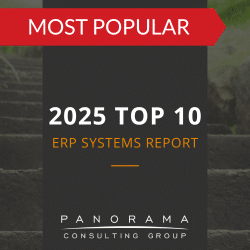Businesses across the globe are taking a closer look at how artificial intelligence (AI) can help power their workforce and their profits.
However, AI alone isn’t enough. To make the best use of this technology, organizations must look for ways to improve the data that their machines learn from. In other words, business intelligence and AI go hand-in-hand.
The Connection Between Business Intelligence and AI
When you use company data to make predictions and solve problems, that’s business intelligence (BI) at work. It’s all about capturing insights and analyzing them to see what impact they could have on your organization.
How are you currently capturing and organizing the data that passes across your desk every day?
A strong data management strategy is key. Some companies treat BI as its own separate entity. Others integrate it into every department. Either way, BI helps bridge the gap between the information you access every day and your bottom line.
If you take the time to develop a BI strategy, it will serve as a solid foundation as you ramp up your AI investments down the road. You must make sure that any data that’s feeding into your AI solutions is clean, accurate, relevant, and complete. Otherwise, you could base mission-critical decisions on unreliable information.
Leveraging BI for AI
Before integrating business intelligence and AI, take a closer look at how you’re currently managing your business insights. If that process is misaligned, siloed, or ineffective in any way, fix those issues before moving on to the next step. Here are a few ways you can do so.
1. Move Your BI Operations to the Cloud
Before embracing AI, you need to ensure you have a single source of truth for all your organizational data. This way, all your team members can collaborate and work together in a streamlined workflow.
It’s much easier to achieve this when everything’s in the cloud. Relying on on-site hardware and outdated legacy systems could render critical files inaccessible at moments when your teams need them the most.
Conversely, the cloud is always there. Your employees can log on to access real-time data updates from anywhere, at any time. This not only improves productivity, but it enables you to use cloud-based analytics to improve your decision-making processes.
If you’re already using the cloud for your ERP system or SCM system, you’re well on your way to unlocking the power of AI analytics.
2025 Clash of the Titans
SAP, Oracle, Microsoft, and Infor each have a variety of systems that can support data-driven decision-making. We surveyed customers of these four vendors to find out what their selection and implementation process was like.
2. Use BI Projects to Drive AI Goals
When your data teams complete a BI project, it’s natural for them to think primarily of short-term logistics.
However, you should encourage them now to think about long-term AI initiatives any time they perform a data engineering activity. In time, they will learn to balance immediate BI requirements with anticipated AI goals.
What does this look like and what will it take to get there? To start, data teams must reimagine their approach to data management by making their data pipelines more flexible and scalable.
They should also develop data modeling and analysis procedures that will adapt easily to new workflows powered by machine learning.
It might take some imaginative reworking, but it’s helpful for these teams to think about how their data engineering activities will feed into and support enterprise-wide AI goals.
3. Keep a Modular Perspective
When companies first decide to use artificial intelligence in business, they tend to do so in a granular way. They might add AI capabilities into one business function but skip another.
They know they want the capabilities, but they aren’t sure how they can use AI to meet their long-term goals.
Ask any software failure expert and they will tell you that you must build new data pipelines incrementally. As you add data sets to the cloud, you’ll be enhancing your future AI capabilities. At the same time, you’ll be adding immediate business value. It’s a win-win.
This also gives you time to try new approaches to your cloud infrastructure and data. Ideally, you will have the freedom to innovate without reinventing your full system architecture.
Using BI to Pave the Way for AI
As AI applications become more sophisticated, we can expect more businesses to take advantage of the capabilities they offer. From warehouse managers to sales leaders, nearly every employee can benefit from intelligent automation.
Yet, before you press ahead with your AI initiatives, make sure your data is ready. The connection between business intelligence and AI cannot be overstated and now is the time to start aligning them.
Is your BI strategy where it needs to be? Reach out to our enterprise software consultants to learn how to optimize your data to inform your use of AI.














